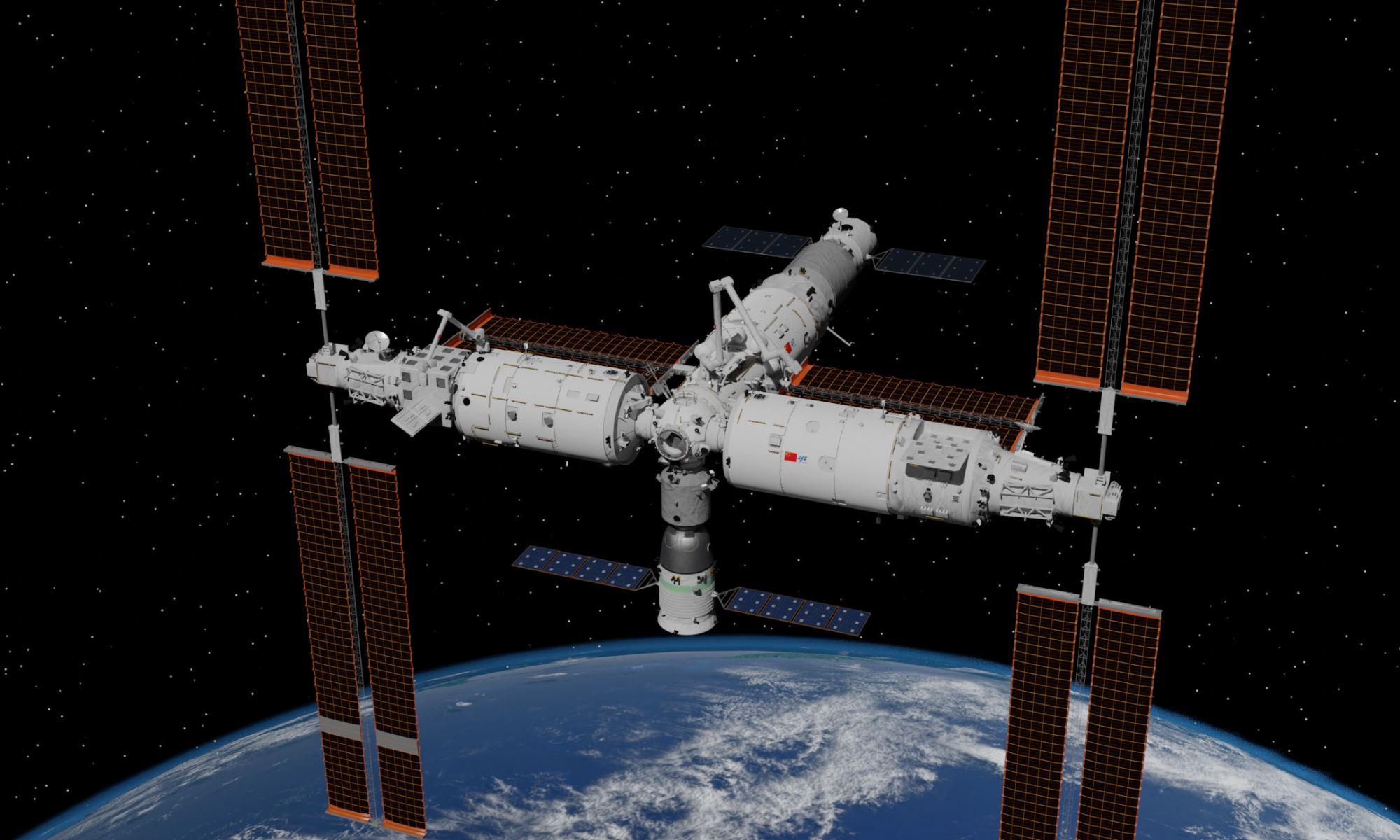On the afternoon of Monday, October 31st, 2022 (Halloween!), China launched the Mengtian laboratory cabin module into space, where it will join the Tiangong modular space station. This module, whose name translates to “Dreaming of the Heavens,” is the second laboratory and final addition to Tiangong (“Palace in the Sky”). This successful launch places China one step closer to completing its first long-term space station, roughly one-fifth the mass of the International Space Station (ISS) and comparable in size to Russia’s decommissioned Mir space station.
The event was live-streamed by the state-owned China Global Television Network (CGTN) and saw the module launch atop a Long March-5B rocket from the Wenchang Spacecraft Launch Site in the southern Hainan province. The launch began at 03:37 PM Beijing Time (08:37 AM EDT; 11:37 AM PDT, October 30th) and separated from its launcher about eight minutes later and entered Low Earth Orbit (LEO). Hours later, Mengtian rendezvoused and docked with Tiangong, fulfilling China’s goal of completing the space station by the end of this year.
China’s space station is the third installment in China’s Tiangong program, which began with the launch of Tiangong-1 in September 2011. The launch of Tiangong-2 followed in September 2016 – a few months before its predecessor was deorbited and burned up in the atmosphere – and deorbited by July 2019. The lessons learned from these two stations informed the creation of Tiangong-3, which began with the deployment of the Tianhe (“Harmony of the Heavens”) core module in April 2021.
This was followed by multiple crewed and uncrewed missions to the station to develop expertise in rendezvous’ and short-term stays. This year, China began adding laboratory cabin modules, starting with the Wentian (“Quest for the Heavens”) science module in July 2022. The Mengtian module is similar in terms of size and weight to Tianhe and Wentian, measuring 17.9 meters (65 ft) long, 4.2 meters (13.8 ft) in diameter (at its widest point), and weighing about 23 metric tons (25.35 US tons).
Unlike the Tianhe and Wentian modules, the laboratory cabin modules are mainly designed for scientific experiments. Their interior layout consists of four sections: a working cabin, a payload cabin, a resource cabin, and an airlock cabin – but no sleeping cabin. When the next taikonaut crews arrive, they will use these labs to conduct microgravity research, including fluid physics, materials and combustion science, and aerospace technology experiments. China hopes this station will succeed the ISS once it is decommissioned (currently scheduled for 2030).
Further Reading: CGTN

